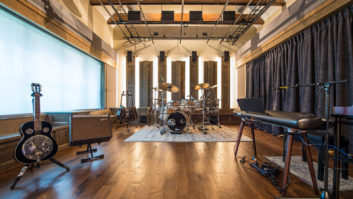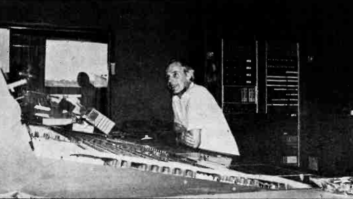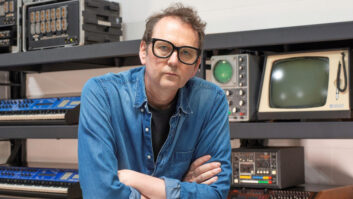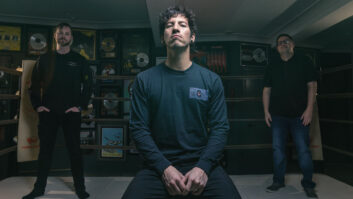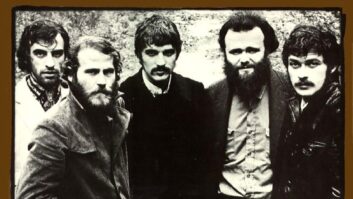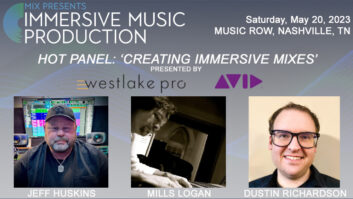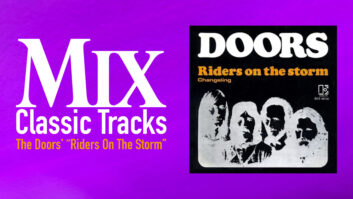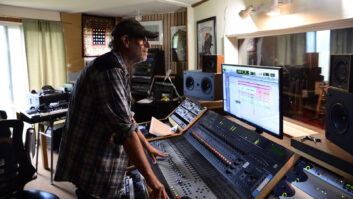Keyboardist Walter Martin, drummer Matt Barrick and guitarist Paul Maroon hadn’t even built a wall, much less manned a console, before building their project studio, the New York City — based Marcata Recording. But with the last nail hammered, they emerged not only knowing how to push a few faders around, but also with a new band, The Walkmen, who have received a fair amount of hype and critical praise for their 2001 debut, Everyone Who Pretended to Like Me is Gone, and the 2003 follow-up, Bows and Arrows.
The indie rock quintet’s three core members founded Marcata as a way to keep playing music together after their previous band, Jonathan Fire*Eater, broke up. With the help of a few friends, they converted a vacant South Harlem warehouse, once the site of a Nash Rambler car factory, into a workable project studio.
“It was kind of a raw space,” Barrick says of the barren but spacious interior, which doubles as the band’s rehearsal studio. “There’s a big spiral ramp that goes down a quarter of the building,” adds Martin. “We’re built on the ramp. It’s not very steep, so it sort of works.”
The control room resides on the upper deck, along with a small, 10×6-foot iso booth. The control room’s large, double-slanted window looks down onto an approximately 800-square-foot live room, which sits about four feet below the control room. “You go down the hall and around the corner to get into the main room,” Barrick says of the trapezoidal space, which contains a large platform in the middle of the room. “You walk in and you’re on the deck. Then there’s a walkway that goes down to the lower level.”
“It’s actually a two-level live room,” explains house engineer Kevin McMahon, who joined Marcata six months ago. “You can put [musicians] on the upper platform for a tight room sound or put them down in the ‘pit.’ It’s large enough that you can do really huge bands and have enough isolation.”
This pit, as McMahon calls it, resides on the lowest level and normally houses a band’s guitar amps. The dead-sounding space can be further isolated by “these horrible baffles,” as Barrick calls them. “They’re huge, plywood and weigh about 200 pounds. They’re very scary.”
When the band pulls an all-nighter at their multilevel studio (Marcata stays dark during business hours due to a few new neighbors), they often use room miking to bring Marcata’s “big, echo-y” sound into their recordings. With the addition of McMahon, who added his own equipment to the Marcata pool, the band and their clients can choose from Telefunken U47 tubes and RCA 74 “junior” ribbon mics, and others from AKG, Audio-Technica, Shure and Sony. The control room contains a 24-channel MCI JH-416B console paired with a Neve 12-channel sidecar. Outboard gear includes a pair of UREI 1176 and dbx 160A compressors, a Tech 21 SansAmp, Roland Chorus Echo and an AKG BX-10 spring reverb.
Multitrack options include an Otari MTR-90II 24-track and a Studer A-80 ¼-inch 2-track machine. McMahon brought in his Pro Tools LE 5.1 workstation with Digi 001 interface and an Apogee Rosetta 800 8-channel 24-bit/96kHz converter, although the band has yet to use either due to their hectic touring schedule. It’s unlikely, however, that the band will enter the digital realm anytime soon. “We did one song [on Bows and Arrows] on Pro Tools,” says Barrick. “It seems to take the fun out of recording.” Martin adds, “It’s nice to see the tape that the sound is going onto, as opposed to putting it on the computer where you can tinker around forever. Sometimes it’s nice to have fewer options.”
The band prefers a natural, live sound for their own records and the acts that they bring into the studio, which to date has included New York — area acts such as the French Kicks, The Kills, the Natural History, Rana and others. On the studio’s Website, www.marcata.net, a list of the group’s influences (Joy Division, The Specials, Royal Trux) gives clients a sense of what to expect at Marcata.
“Marcata has a sound unto itself,” McMahon says. “The [group] is very into distance-miking — using the room. The casualness that comes from the studio being owned by a band makes it a really great environment. We have a steady flow of people and it constantly blows me away. Everybody has a good time, and we get a lot of work done.”
Heather Johnson is Mix’s editorial assistant.
